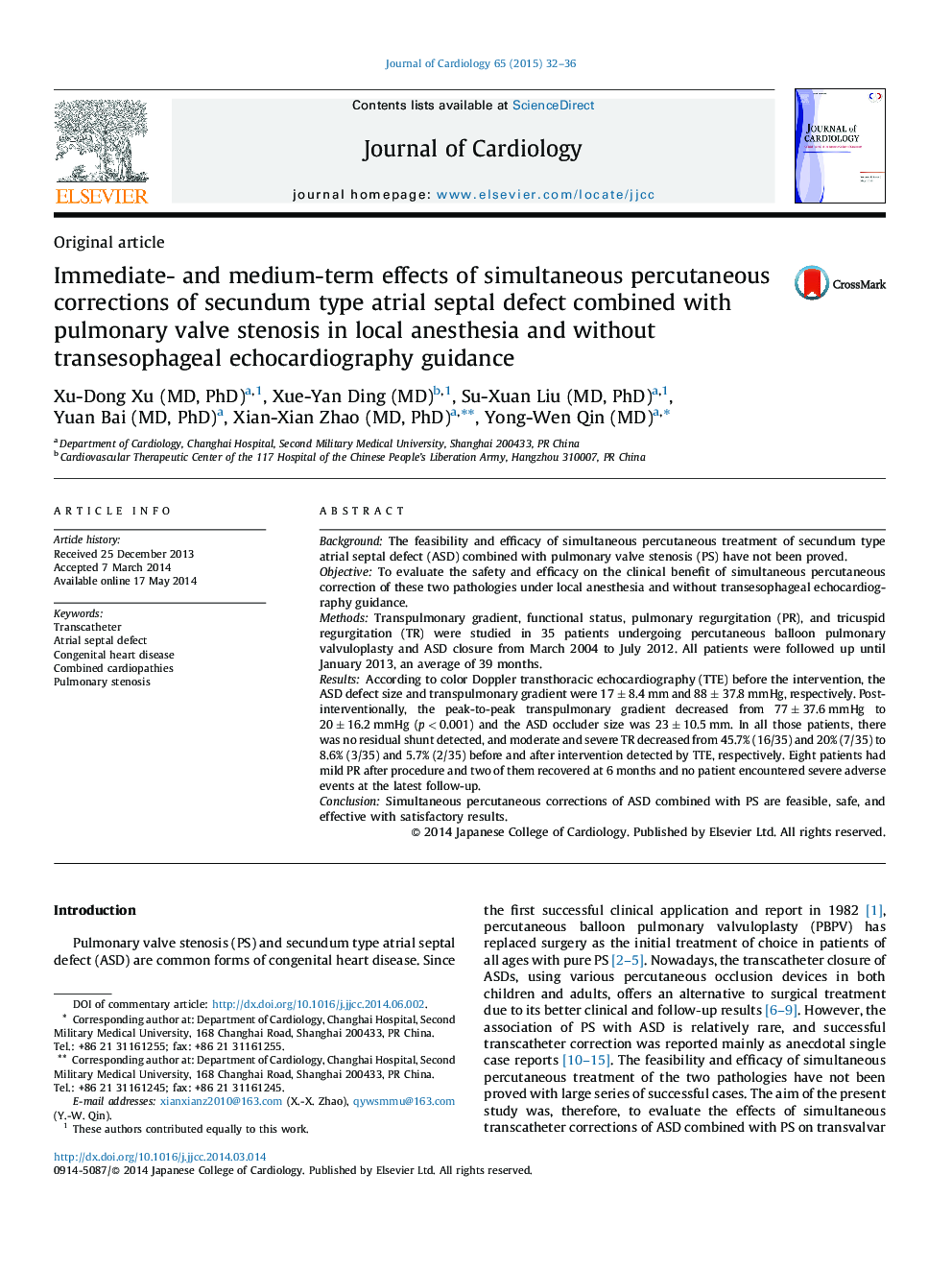| Article ID | Journal | Published Year | Pages | File Type |
|---|---|---|---|---|
| 5984003 | Journal of Cardiology | 2015 | 5 Pages |
BackgroundThe feasibility and efficacy of simultaneous percutaneous treatment of secundum type atrial septal defect (ASD) combined with pulmonary valve stenosis (PS) have not been proved.ObjectiveTo evaluate the safety and efficacy on the clinical benefit of simultaneous percutaneous correction of these two pathologies under local anesthesia and without transesophageal echocardiography guidance.MethodsTranspulmonary gradient, functional status, pulmonary regurgitation (PR), and tricuspid regurgitation (TR) were studied in 35 patients undergoing percutaneous balloon pulmonary valvuloplasty and ASD closure from March 2004 to July 2012. All patients were followed up until January 2013, an average of 39 months.ResultsAccording to color Doppler transthoracic echocardiography (TTE) before the intervention, the ASD defect size and transpulmonary gradient were 17 ± 8.4 mm and 88 ± 37.8 mmHg, respectively. Post-interventionally, the peak-to-peak transpulmonary gradient decreased from 77 ± 37.6 mmHg to 20 ± 16.2 mmHg (p < 0.001) and the ASD occluder size was 23 ± 10.5 mm. In all those patients, there was no residual shunt detected, and moderate and severe TR decreased from 45.7% (16/35) and 20% (7/35) to 8.6% (3/35) and 5.7% (2/35) before and after intervention detected by TTE, respectively. Eight patients had mild PR after procedure and two of them recovered at 6 months and no patient encountered severe adverse events at the latest follow-up.ConclusionSimultaneous percutaneous corrections of ASD combined with PS are feasible, safe, and effective with satisfactory results.
